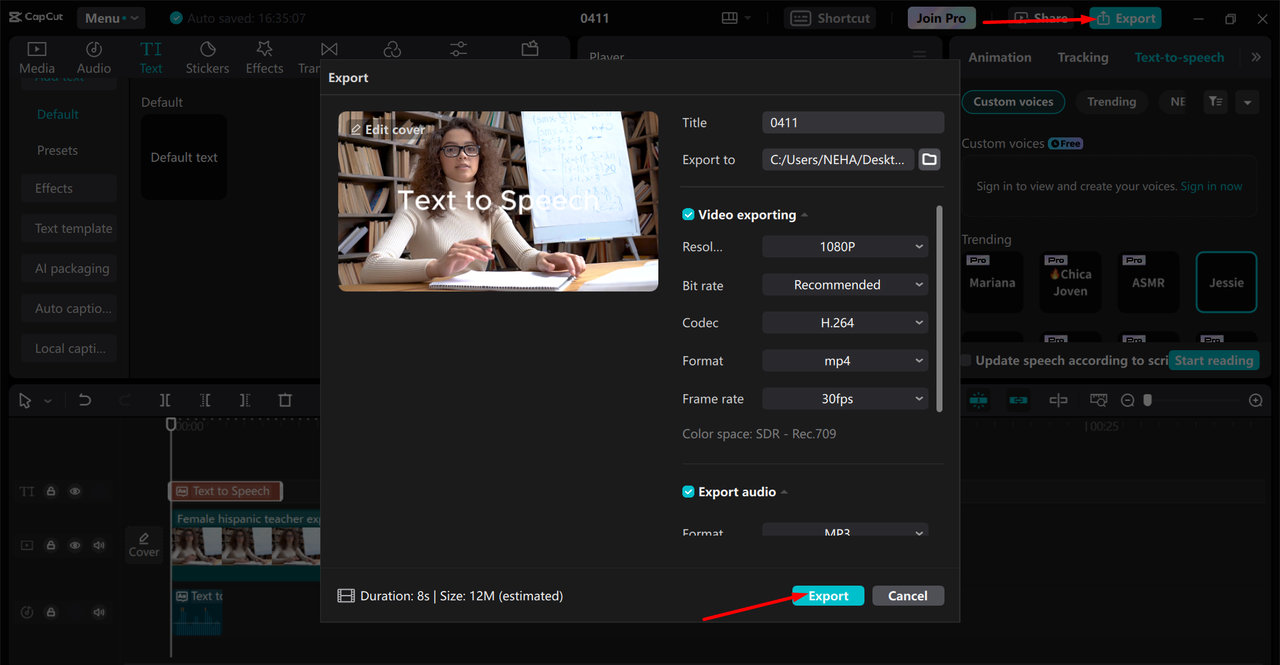Producing video tutorials for students is a great way of enabling them to learn more. Videos can make learning simpler and interesting, as long as you keep the language and the graphics simple and make them easy to understand. If you have to make your videos informative and interesting, the following guidelines can help you produce video tutorials for students. Text to speech is one of the necessary tools that can make video learning simple. It can convert written lessons into an audio version that can be helpful to all students, including students with learning difficulties.
So, let’s get in!
Why Video Tutorials Are Effective for Students
Here’s why video tutorials are more effective for students than written content:
Visual Learning for Better Retention
Students are better at learning if they get to see things they’re learning. Videos are good because they use pictures and sound to talk about things. Research has established that students learn better when watching videos than by reading from a book. When you explain something on a video, they see it happen and hear the explanation, so it’s easier for them to learn.
Accessibility and Flexibility
One of the biggest advantages of video tutorials is that students can watch them at any time that is convenient for them. They can watch them at home, in class, or even when they are traveling. They can watch the video on their tablet, smartphone, or laptop. This allows them to study at their own pace. If they don’t get something, they can rewind and replay the video until they do.
Video tutorials are also a great help for students who have different learning needs. By using a voice changer, you can make the video more engaging by adjusting the tone of the voiceover. This can help keep students interested, especially when explaining more complex topics.
How to Plan Your Video Tutorial
Here’s how you can plan your video tutorial:
Defining the Objective
Before you start creating a video tutorial, you need to decide what you want to teach. What do you want the students to learn by the end of the video? Be clear about your objective so that the video can stay focused on that topic. If you’re teaching math, for example, your goal might be to help students understand how to solve equations. This will guide you as you create your tutorial.
Structuring Your Content
A good video tutorial needs a clear structure. Start with an introduction to explain what the video is about. Then, break the lesson into smaller, easy-to-understand steps. For example, if you’re teaching a math concept, divide it into a few steps and explain each one in a simple way. Use pictures or graphics to make your explanations even clearer. Lastly, end with a summary of the key points to help students remember what they’ve learned.
Visual Elements to Include
To make your videos more engaging and interesting, these are some visuals elements you should add:
Using Clear and Simple Graphics
When creating a video tutorial, it’s important to include visuals that help explain what you’re teaching. Use clear and simple graphics that make complex ideas easier to understand. For example, if you’re explaining a scientific concept, you can use diagrams or animations that show how things work. Visuals help break down complicated ideas and make learning more engaging for students.
Animation and Transitions
Animations are another great way to keep students interested. You can use animations to show things moving or changing, which can help explain difficult concepts. For example, if you’re teaching about the water cycle, you could animate the process of evaporation, condensation, and precipitation. Transitions between scenes can also make the video feel smooth and professional. Just remember not to overdo it—too many animations or fast transitions can distract from the lesson.
Tools for Creating Student-Friendly Video Tutorials
Here’s the list of top tools you should use to create a student-friendly video tutorial:
Highest Video Editing Software
There are many tools available for creating video tutorials, but some are easier for beginners to use. Popular video editing software like the CapCut desktop video editor is great for professional-quality videos.
Integrating AI in Video Creation
One of the exciting new ways to create videos is with AI tools. An AI video generator can help you create videos faster by automating some of the work. For example, AI can automatically add captions or generate voiceovers from text.
This is especially helpful when you’re in a hurry or have a lot of tutorials to create. AI tools can also suggest improvements to your video or help you organize the content in the best way for students to understand.
How to Convert Text to Speech in Your Videos Using CapCut Desktop Video Editor
Importing Your Video

Converting Text to Speech

Exporting the Final Video



